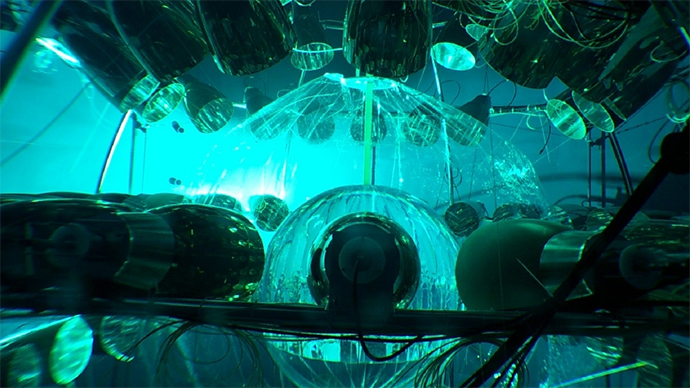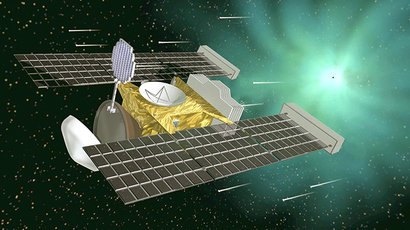‘Soul of the sun’ detected for the first time by scientists

Scientists have for the first time detected the solar neutrino particles forged in the sun’s heart that are eventually emitted into the galaxy as light.
More than 100 international scientists from the University of Massachusetts Amherst worked together using the Borexino detector in Italy to make the discovery, which provides humans with a peak into the process of nuclear fusion that is responsible for bathing the Earth with light. The findings were first reported in the latest issue of the Nature journal.
Although it only takes eight minutes for light from the sun to hit Earth, there is a substantially longer process that takes place before that can happen. After the solar neutrinos are formed in the sun’s core, another 100,000 years must pass before they make their way to the star’s surface and shoot out at the speed of light.
“The first step in the dominant fusion process in the sun starts when two protons in its core fuse into a deuteron, creating a [proton-proton] neutrino,” wrote Nola Redd at Space.com. “Other neutrinos are created in subsequent steps of the process, several of which have been detected, but the first-step neutrinos remained elusive.”
Now that these neutrinos have been detected, though, scientists are hoping to learn even more about the sun’s energy-forming processes.
"[The neutrinos] are the most direct confirmation that nuclear fusion is the source of energy [for the sun]," said Wick Haxton of University of California, Berkeley, to the website.
Once the particles shoot out of the sun, they make their way to the Earth extremely quickly, showering every square inch of the planet’s surface with up to 420 billion every second.
“By comparing the two different types of solar energy radiated, as neutrinos and as surface light, we obtain experimental information about the sun's thermodynamic equilibrium over about a 100,000-year timescale,” said university scientist, and international team member, Dr. Andrea Pocar, to the Daily Mail.
“If the eyes are the mirror of the soul, with these neutrinos, we are looking not just at its face, but directly into its core. We have glimpsed the sun's soul.”














